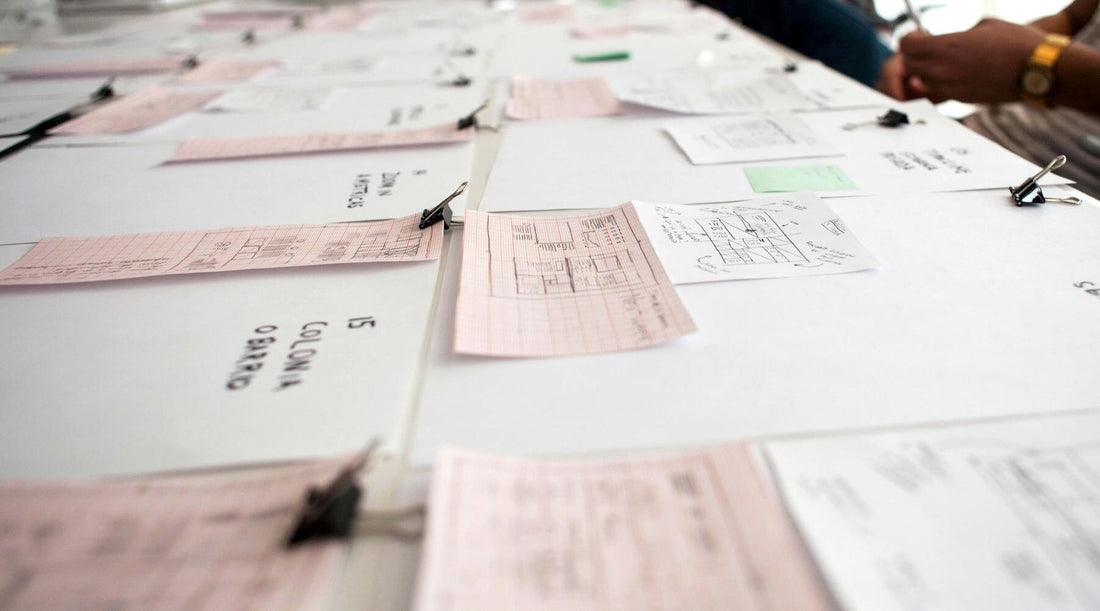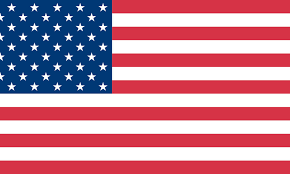International Paper Sizes Explained: From A4 to C0 and Beyond

When you think about paper, the size might not be the first thing that comes to mind. However, understanding different paper sizes is important for various tasks like printing documents or sending letters. This blog will help you grasp the essentials of international and North American paper size standards, making your daily tasks easier and more efficient.
What Paper Size Standard Is Used Today?
There are two main standards for paper sizes used today: the International or ISO 216 standard and the North American system. Each has its own unique uses.
International Standard
The International Standard, also known as ISO 216, is used almost everywhere around the world except for North America. This standard is based on a consistent aspect ratio, making it easy to scale documents up or down without losing proportion. The most commonly used paper sizes in this standard belong to the A series, with A4 size being the most popular.
North American System
In contrast, the North American system primarily uses Letter (8.5 × 11 inches), Legal (8.5 × 14 inches) and Tabloid (11 × 17 inches) formats. These dimensions do not follow a specific ratio, which can sometimes make it challenging when scaling documents. Despite this, the North American sizes are deeply ingrained in the business culture of the United States and Canada, making them widely used and recognized.
How Were Standard Paper Sizes Determined?
The history of paper size standards dates back to the early 20th century. The ISO 216 standard, for example, was developed in Germany in the 1920s and adopted internationally later on. It was designed to create a logical and consistent system for paper sizes. On the other hand, the North American sizes originated during the colonial times and were standardized much later, primarily for office use.
What Are the Different Sizes of Paper?
Before diving into the specifics, it's important to know why these sizes matter. Whether you're printing a resume, crafting a legal document, or designing a brochure, knowing the right paper size can save you from headaches and help ensure your project turns out just right.
Traditional North American Paper Sizes
The North American paper sizing system is widely used in the United States and Canada for various professional and personal purposes. These sizes are integral to everyday activities in offices, schools, and print shops. Let's start by looking at the three most common North American paper sizes:

-
Letter (8.5 × 11 inches):
Letter size is the standard paper size for most documents in the United States. With dimensions of Width x Height 216 x 279 millimeters, letter-sized paper is typically used for everyday printing needs like reports, letters, and school assignments.
-
Legal (8.5 × 14 inches):
Slightly longer than letter size, the dimensions of Legal paper is 216 x 356 millimeters, and is often used for contracts and legal documents. The extra length allows for more text per page, which can be useful in legal settings.
-
Tabloid (11 × 17 inches):
Also known as ledger paper when used horizontally, the width x height of Tabloid is 279 x 432 millimeters. It is often employed for creating newspapers, magazines, and larger brochures. It provides ample space for layouts that include both text and images.
The following table provides a direct comparison of the dimensions for these three types of paper, listed in both inches and millimeters.
| Format | Width x Height (Inches) | Width x Height (Millimeters) |
| Letter | 8.5 x 11 | 216 x 279 |
| Legal | 8.5 x 14 | 216 x 356 |
| Tabloid (Ledger) | 11 x 17 | 279 x 432 |
International Standard Paper Sizes
The ISO 216 standard divides paper sizes into three series: A, B, and C. Each series is used for different purposes but all share the same aspect ratio. This makes it easy to resize documents while keeping them clear and consistent, which is important for international use.
1. Paper Sizes in the A series
The A series is the most common and versatile among the ISO 216 standard paper sizes. This series is widely used across various industries due to its practical dimensions and easy scalability. Each size in the A series maintains the same aspect ratio of 1:√2, making it straightforward to enlarge or reduce documents without altering their layout. Here’s a detailed look at the different sizes within the A series:

Let's take a closer look at the exact width and height of each size in the A series. Knowing these measurements can help you choose the right paper size for your needs, making sure your documents or projects are just right. Here are the detailed dimensions:
| Format | Width x Height (Inches) | Width x Height (Millimeters) |
| A0 | 33.1 x 46.8 | 841 x 1189 |
| A1 | 23.4 x 33.1 | 594 x 841 |
| A2 | 16.5 x 23.4 | 420 x 594 |
| A3 | 11.7 x 16.5 | 297 x 420 |
| A4 | 8.3 x 11.7 | 210 x 297 |
| A5 | 5.8 x 8.3 | 148 x 210 |
| A6 | 4.1 x 5.8 | 105 x 148 |
| A7 | 2.9 x 4.1 | 74 x 105 |
| A8 | 2.0 x 2.9 | 52 x 74 |
Among the international A series, A4 paper is particularly prevalent. You'll find it in offices, schools, and homes globally. Its dimensions are ideal for printing documents, taking notes, and even crafting flyers. The A-series paper sizes are designed to allow easy scaling: if you fold an A4 sheet in half, you get an A5 sheet, and so on. This proportionality is incredibly convenient for various applications.
2. Paper Sizes in the B series
The B series is less commonly used but offers larger dimensions for bigger projects. It’s often chosen when A series sizes are too small but you still need a standardized format. Here’s a quick look:
| Format | Width x Height (Inches) | Width x Height (Millimeters) |
| B0 | 39.4 x 55.7 | 1000 x 1414 |
| B1 | 27.8 x 39.4 | 707 x 1000 |
| B2 | 19.7 x 27.8 | 500 x 707 |
| B3 | 13.9 x 19.7 | 353 x 500 |
| B4 | 9.8 x 13.9 | 250 x 353 |
| B5 | 6.9 x 9.8 | 176 x 250 |
| B6 | 4.9 x 6.8 | 125 x 176 |
| B7 | 3.5 x 4.9 | 88 x 125 |
| B8 | 2.4 x 3.5 | 62 x 88 |
3. Paper Sizes in the C series
The C series is mainly used for envelopes and packaging. It's specifically designed to fit A series paper sizes perfectly, ensuring a snug fit. Here are the dimensions:
| Format | Width x Height (Inches) | Width x Height (Millimeters) |
| C0 | 36.1 × 51.1 | 917 x 1297 |
| C1 | 25.5 × 36.1 | 648 x 917 |
| C2 | 18 × 25.5 | 458 x 648 |
| C3 | 12.8 × 18 | 324 x 458 |
| C4 | 9 × 12.8 | 229 x 324 |
| C5 | 6.4 × 9 | 162 x 229 |
| C6 | 4.5 × 6.4 | 114 x 162 |
| C7 | 3.2 × 4.5 | 81 x 114 |
| C8 | 2.2 × 3.2 | 57 x 81 |
What Paper Sizes Do Printers Use?
Printers in homes and offices usually accommodate the A4 size paper due to its widespread use. In North America, printers are designed to handle Letter size paper by default. Most modern printers offer flexibility and can print different sizes, but ensuring compatibility with the most commonly used sizes like A4 and Letter will make your life easier.
Pro Tip: How to Print A4 Documents
Printing A4 documents can be done using traditional laser or inkjet printers, but one of the best methods is through thermal printers. Thermal printers are fast, efficient, and require no ink, making them a great choice for high-volume printing tasks.
One standout option is the MUNBYN thermal printer. MUNBYN offers reliable performance and excellent print quality, especially for A4 documents. Additionally, MUNBYN printers let you enjoy custom sticker printing, roughly equivalent to A8 size. This feature is particularly useful for labeling and small-scale printing needs. With MUNBYN, you not only get a versatile printer but also the convenience of various compatible paper sizes.
Final Words
Understanding paper sizes and their standards can significantly improve your workflow, whether you're printing at home, in the office, or professionally. By familiarizing yourself with both international and North American standards, you can choose the right paper size for any task.




